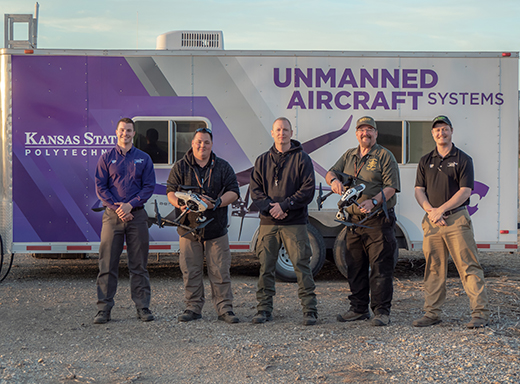01/30/19
K-State Current - January 30, 2019
K-State Current is a weekly news update for the Kansas Board of Regents to apprise the Regents on a few of the many successes and achievements made by K-State faculty, staff and students.
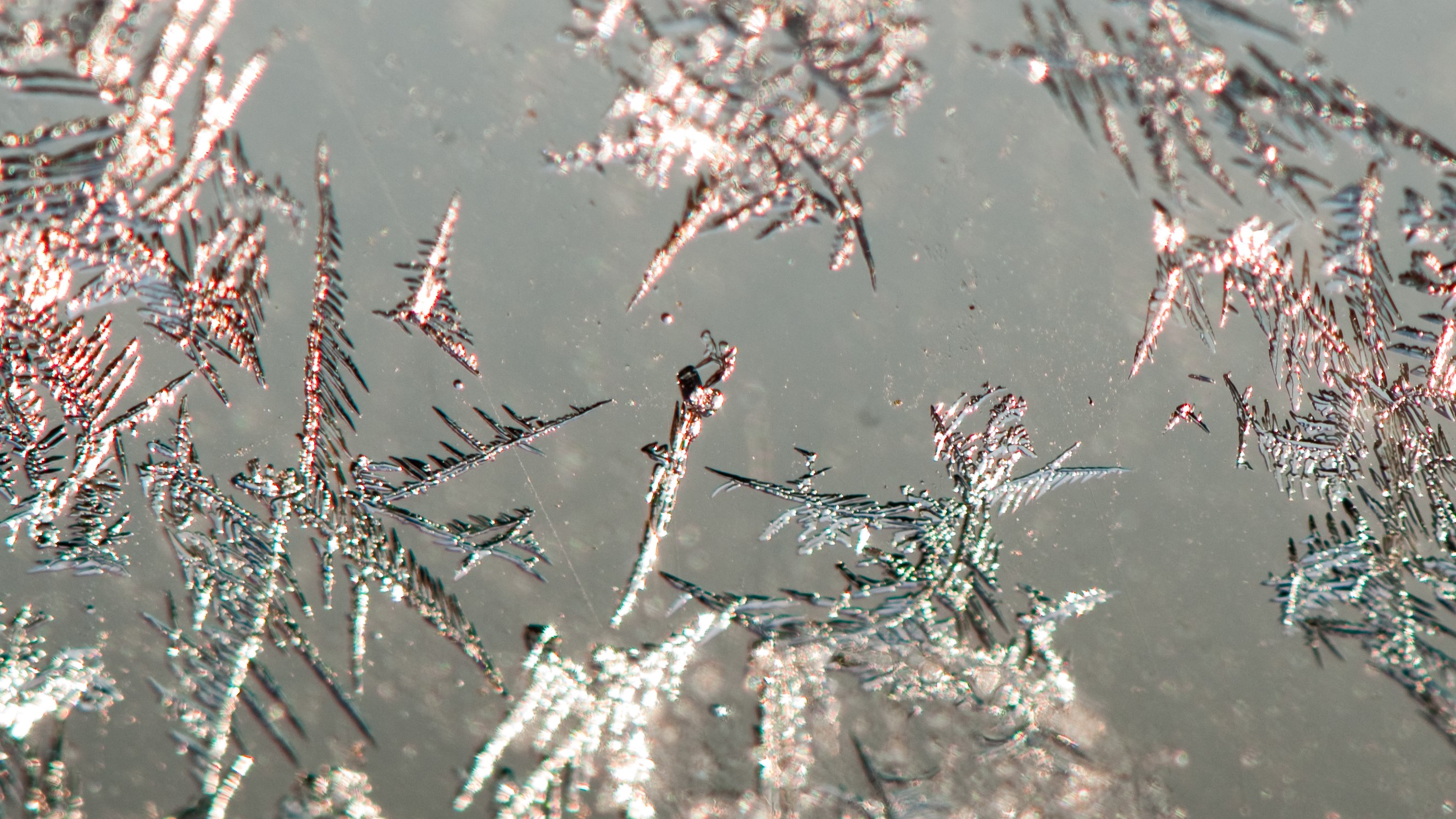
K-State News
The Applied Aviation Research Center on the Kansas State University Polytechnic Campus is working with law enforcement partners to evaluate small unmanned aircraft remote sensing technologies to reconstruct crime scenes.
Under the grant, sponsored by the National Institute of Justice, the center is collaborating with the Kansas Bureau of Investigation, the Riley County Police Department and the Kansas City Police Department in Missouri to evaluate sUAS remote sensing technology and compare it to the conventional methodology of using terrestrial-based LiDAR — or laser-based remote sensing technology — systems for crime scene reconstruction. Unlike previous studies, the Polytechnic Campus project will use a comprehensive approach to compare sUAS photogrammetry and aerial LiDAR to terrestrial laser scanning at multiple test locations during day and night conditions.
Funding for this research, titled "Evaluation of Terrestrial Laser Scanning and Aerial Remote Sensing with sUAS for Forensic Crime Scene Reconstruction" comes from a seven-month, $91,416 grant from the Research and Development in Forensic Science for Criminal Justice Purposes Program of the National Institute of Justice, a part of the Department of Justice.
"The Applied Aviation Research Center has a mission to help introduce commercial UAS to various lines of business," said Kurt J. Carraway, the center's UAS executive director. "Additionally, we provide UAS flight training services to industry partners through our professional education and outreach program. Through this program, approximately 35 percent of the trainees come from the public safety area. Over the past year in particular, we developed strong relationships with multiple law enforcement agencies."
The project will potentially impact more than 3,000 law enforcement personnel across the country as well as any entity wanting to know more about the benefits and compromises of using remote sensing technologies to produce precise reconstructions of outdoor terrain and features.
"With continued research in forensic documentation, identification, processing and reconstruction, the application of UAS operations has the possibility to positively impact and support public safety agencies in many facets of crime scene," said M. Wade Cherms, crime scene investigator with the Riley County Police Department. "Conducting trials and testing could impact investigations from scene to courtroom by knowing what works in certain applications indicated through the collection of data."
Terrestrial laser scanning is an instrumental tool in accurately depicting various crime scenes for use in court, said Robert Jacobs, assistant special agent in charge who oversees the Kansas Bureau of Investigation's Crime Scene Response Team.
"Terrestrial laser scanning is extremely helpful, but we're interested in seeing how the aerial data compares," Jacobs said. "The aerial perspective has strong potential to provide more details in some instances and may be a quicker and less complex approach to collecting the data."
Through the use of quantitative and qualitative metrics, the team will evaluate each technology and will produce a journal article detailing the equipment, methods and results of the research.
Two K-Staters have been named recipients of Commerce Bank and W.T. Kemper Foundation presidential awards for promoting diversity at Kansas State University.
Tanya González, a faculty member in the English department and affiliate faculty in the American ethnic studies and the gender, women, and sexuality studies departments, is the awardee for the Presidential Faculty/Staff Award for Distinguished Services to Historically Under-Represented Minority Students.  The award was established in 1978 to recognize outstanding individual contributions to the development of quality education for students of color at Kansas State University.
The award was established in 1978 to recognize outstanding individual contributions to the development of quality education for students of color at Kansas State University.
During her career at the university, González has had a significant influence on the retention of underrepresented students at K-State. She was hired as a faculty member but has far exceeded her role, as her teachings go far beyond the classroom. She presents at various campus wide diversity events such as the Encuentro during Hispanic Heritage Month as well as the inaugural KSUnite event that captured university wide attendance.
González has made outstanding contributions to educational program development and unique research. According to her nomination letter, González brings "humanity to what otherwise seems like an inflexible system" by meeting one on one with students and learning their stories.
Adam R. Carr is the recipient of the Commerce Bank and W.T. Kemper Foundation Presidential Student Award for Distinguished Services in Enhancing Multiculturalism at Kansas State University. The award was established in spring 1997 to recognize outstanding individual contributions to diversity enhancement within the student sector.
Carr is a senior in human resources management in the College of Business Administration with minors in leadership and queer studies. Carr currently serves as the special projects assistant for the LGBT resource center and the library student help specialist for Hale Library. Carr has served in many leadership roles at K-State, through many diversity and inclusion committees, as well having been the president and vice president of the Sexuality and Gender Alliance and the Little Apple Pride Liaison chair. He is also an ambassador to GLAAD, the Gay and Lesbian Alliance Against Defamation.
Carr was also a featured student speaker at KSUnite. He spoke about his support for a multicultural student center and efforts to increase retention of underrepresented students who are seeking higher education. His involvement in promoting diversity at the university spans many areas.
According to his nomination letter, Carr uses his voice as a platform to be inclusive of others who may not otherwise be represented in matters of making change on K-State's campus. Carr "helps others appreciate their privileges, acknowledge their cultural encapsulation, and learn about communities they are unfamiliar with, while never ignoring the ways the intersections of identities create unique experiences for all of us."
Carr's goal is to focus his efforts to go beyond buzzwords to create active change and increase mental health resources for those who are less represented on campus.
K-State Faculty Highlights
Under the sea: Kansas State University geologist explores the depths of the oceans
Kansas may be landlocked, but that has not stopped a Kansas State University geologist from going 1.5 miles underwater to explore the deepest parts of the Pacific Ocean.
Aida Farough, a teaching assistant professor of geology, has been spending weeks at sea while she studies the ocean floor, underwater volcanoes and hydrothermal vents at mid-ocean ridges. But Farough's underwater explorations are doing more than helping scientists understand the minerals and microbial life on the ocean floor. Her research can provide key insights to the origin of life on Earth as well as the existence of life and hydrothermal vents on other planets.
"Just because we don’t have an ocean in our backyard in Kansas, we shouldn’t ignore the oceans and the opportunities of marine exploration," Farough said. "We know less about the oceans than we know about some of the planets in our solar system. In fact, we have better maps of Mars than parts of the oceans within the U.S. territory."
That's why Farough is involved in several large international research projects that are aiming to learn more about the geologic processes on the ocean floor. Her research deals with three things — water, rocks and heat — and the interactions among them. She is primarily interested in fluid flow and heat transfer in seafloor hydrothermal systems, which are like chimneys or vents on the oceanic crust.
"Much of the work that I and many other scientists do is hampered by lack of data, such as heat flow from the seafloor," Farough said. "To collect such data, one has to make a trip to an actual study area. My study area just happens to be 1.5 miles underwater and spread out over square miles of rugged seafloor."
Farough just returned from three weeks on the research vessel Atlantis in the Pacific Ocean off the coast of California. During the ocean cruise, Farough dove to the bottom of the ocean — a depth of 2,500 meters, or about 1.5 miles — in Human Occupied Vehicle Alvin. Alvin was involved in the 1986 exploration of the wreckage of the Titanic.
Atlantis researchers focused on the mid-ocean ridge called East Pacific Rise. Mid-ocean ridges are regions of the oceanic crust where heat, fluid and lava escape from deep below the seafloor through the spreading of tectonic plates. Hydrothermal vent systems are found along mid-ocean ridges and host rich ecosystems.
The research vessel, or ship, is a floating science lab full of analytical instruments. During oceanic cruises, researchers like Farough gather rock samples and data from the seafloor, either by drilling or by driving submersibles to the bottom of the ocean.
When Farough was on the bottom of the ocean, she used instruments to measure heat from hydrothermal systems, where material from inside the Earth is released into the ocean in the form of hot, black water. The temperatures of hydrothermal fluid reach up to 680 degrees Fahrenheit and the heat supports nearby ocean life, such as crabs and tubeworms.
Hydrothermal vents may have been present on early Earth and could provide key insights into the early evolution of the Earth and life, Farough said. Her research also links to hydrothermal vents on planetary bodies, such as Saturn's moon Enceladus, which has a global liquid ocean.
"The heat from hydrothermal systems is responsible for life thriving in the most hostile environments on Earth, deep in the oceans where there is no sunlight and seawater temperatures are near freezing," Farough said. "Learning more about hydrothermal systems can take us a step closer to understanding heat distribution in oceanic crust, origination of life on Earth and existence of life on other planets."
Farough's underwater dive was part of a National Science Foundation-funded research cruise with the University-National Oceanographic Laboratory System. Farough was one of 11 early career U.S. scientists selected for the cruise to investigate underwater volcanic, hydrothermal and biological activity.
Farough also recently spent two months with International Ocean Discovery Program scientists on the U.S. research drilling vessel called the JOIDES Resolution to study the mineral resources near Brothers volcano, which is the most hydrothermally active volcano in the Kermadec Arc in the Pacific Ocean northeast of New Zealand. The project marked the first attempt to drill into a submarine volcano.
Farough was selected as one of 11 researchers from the U.S. on the 34-person science team that also included researchers from Europe, Japan, China and the United Kingdom. Farough is specifically studying the fluid transport properties and permeability of rock samples from Brothers volcano.
She also spent two weeks on Japan’s drilling vessel, called Chikyu, to analyze cores drilled from the ancient seafloor in the deserts of Oman. The Oman Drilling Project focuses on oceanic formations at mid-ocean ridges, hydrothermal alteration of the seafloor and mass transfer between the crust and the oceans. The Oman Drilling Project involves 166 scientists representing 30 countries from five continents.
Now that she is back on land and in Kansas, Farough is further analyzing the rock samples and data she collected at sea. This includes evaluating the samples' physical properties, such as permeability, density and porosity. She is collaborating with many other scientists and engineers to achieve her scientific goals.
"Mineral resources play an important role in the Kansas economy, but population growth is constantly challenging us to seek more resources," Farough said. "Now that mining and farming on the moon and colonization of Mars are becoming a reality, why not consider using the resources in the oceans first? Oceans have so much to offer to us, including unknown and unlimited amounts of energy and mineral resources."
K-State Student News
APDesign architecture student wins in international design competition
Nicholas Horvath, a fifth-year graduate student in the architecture department at Kansas State University's College of Architecture, Planning & Design, or APDesign, is winner of one of the six honorable mentions in the international Silent Meditation Forest Cabins Competition for his entry titled "Frame." Horvath also was the only recipient of an award from the United States out of more than 84 project entries.
The competition is an open international contest for a series of off-the-grid meditation cabins in rural Latvia. It is organized in collaboration with Ozolini, a Latvian tea company.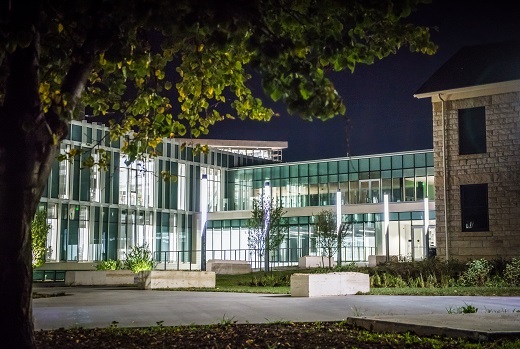
The competition sought eco-friendly and cost-effective proposals for an easily constructible and replicable 15-square-meter hut that could be sited in a series of forested locations across the Ozolini farm. The cabins are intended to provide users a calm space to meditate while surrounded by the sounds of nature.
Designers were asked to propose a series of cabins that have the capacity to: provide comfortable living accommodation to a single person for four to five days; be operational in all seasons; contain sufficient clear floor area for meditation; include small food and water storage; be mosquito proof; incorporate alternative lighting options; and include a heating system for winter months.
Asked about what architecture means to him and what is the role of an architect in society, Horvath responded, "Architecture to me can be defined as the development of a place within the greater story of its context. The role of the architect is to generate a design that will enhance the users’ experience, while at the same time adhering to and enhancing the story of the surrounding context. Architects have the ability to shape society, so they must do it with a sense of humility, responsibility and a passion for their communities."
"I am proud of Nick's initiative to tackle this competition outside of the normative significant demands of his curricular studies," said Tim de Noble, dean of the College of Architecture, Planning & Design. "Frame is a sublimely beautiful project, worthy of recognition. I hope it is built someday … in a locale that I can access!"
The winning proposals are now considered for construction and designs for the Silent Meditation Forest Cabins were to primarily focus on eco-friendly and cost-effective building techniques, to be models for one of Europe's greenest countries.
Designs were judged for their integration within the forest and sensitivity to the environment. A range of ideas was submitted for cabins that have the capacity to interact with the forest in a variety of ways.
This competition is part of a series organized by Bee Breeders focused on designs for compact living spaces integrated within nature.
Four students receive Gilman Scholarships for international study
Four Kansas State University students have received Benjamin A. Gilman International Scholarships to study abroad during the spring 2019 semester or summer 2019.
Kourtney Talkington, junior in nutrition and health, Ellis; Annabelle Burtnett, sophomore in anthropology, Pleasanton; Bailey Martin, senior in electrical engineering, Wichita; and Pranav Savanur, sophomore in biology and pre-med, India,will receive up to $5,000 to study abroad.
Congressionally funded and established by the International Academic Opportunity Act of 2000, the Gilman Scholarship Program helps U.S. undergraduate students at two-year or four-year colleges or universities participate in study abroad programs worldwide.
Talkington will study food, wine and drawing in Orvieto, Italy, in summer 2019. As a nontraditional student through K-State Global Campus, she is a member of Phi Theta Kappa and volunteered for the Susan G. Komen 2018 Walk/Run fundraiser. In addition to the Gilman, she has received the Scott Human Nutrition Scholarship, Evans Health Scholarship, Global Campus Scholarship for Distance Education Students, and Food, Nutrition, Dietetics and Health Scholarship.
"This international experience means a lot to me," Talkington said. "It will give me time to do some personal growth away from my children, change how I view everyday life, and set me apart from other students. My children are my world and I want to show them that anything is possible no matter what life throws at you and they can achieve anything if they work hard enough for it."
Burtnett will study paleoanthropology and archaeology at the Paleoanthropological Field School at Olduvai Gorge, Tanzania, during summer 2019. 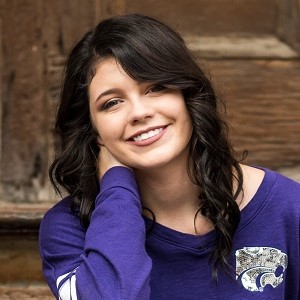 Olduvai Gorge is known for its fossil remains that have contributed to the study of early humans. In addition to the Gilman scholarship, she has received Foundation Plus Scholarship.
Olduvai Gorge is known for its fossil remains that have contributed to the study of early humans. In addition to the Gilman scholarship, she has received Foundation Plus Scholarship.
"I am honored to not only have been accepted into my field school of choice but to have also received the Gilman to help pay for the program," Burtnett said. "This field school and the Gilman award have given me the perfect chance to jump-start my academic and eventually professional career."
Martin will study electrical engineering at the Czech Technical University in the Czech Republic for the spring 2019 semester.  She was the 2017-2018 electrical design leader for Powercat Motorsports and is a teaching assistant for Introduction to Electrical Engineering. In addition to the Gilman scholarship, she has received an Engineering Leadership and Innovation Program Scholarship.
She was the 2017-2018 electrical design leader for Powercat Motorsports and is a teaching assistant for Introduction to Electrical Engineering. In addition to the Gilman scholarship, she has received an Engineering Leadership and Innovation Program Scholarship.
"I am very grateful that I received this opportunity and look forward to the opportunities that come from being a Gilman scholar," Martin said. "I am looking forward to getting to know people of all different backgrounds and cultures while abroad."
Savanur will study life sciences at the University of Liverpool in the United Kingdom for the spring 2019 semester. 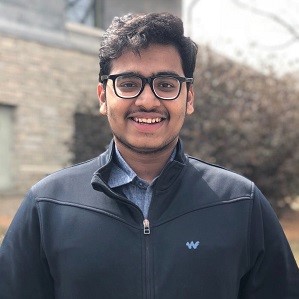 During the 2018-2019 winter break, he participated in Kansas State University's Alternative Break program to promote rural public health in Allen County. He is the public relations officer for the Indian Students Association at the university, Wellcat ambassador for Lafene Health Center, student ambassador for Housing and Dining Services, International Student Welcome ambassador, and vice president of the West Hall Council for the Association of Resident Halls. In addition to the Gilman scholarship, he has received a Memorial Scholarship.
During the 2018-2019 winter break, he participated in Kansas State University's Alternative Break program to promote rural public health in Allen County. He is the public relations officer for the Indian Students Association at the university, Wellcat ambassador for Lafene Health Center, student ambassador for Housing and Dining Services, International Student Welcome ambassador, and vice president of the West Hall Council for the Association of Resident Halls. In addition to the Gilman scholarship, he has received a Memorial Scholarship.
"It is my goal to be a medical anthropologist and work in countries where doctors are needed the most but cannot afford quality care," Savanur said. "This scholarship will enable me to achieve my goals by giving me an opportunity for research in University of Liverpool's Tropical medicine department."
The next Gilman Scholarship application deadline is March 5 for students planning to go abroad during the summer or fall 2019 terms. If you are interested in learning more about this prestigious scholarship and how to get started with your application, please attend the Gilman Scholarship Workshop at 3:30 p.m. Thursday, Feb. 7, in the Room 206 of the K-State Student Union or email Sara Boro, education abroad advisor, at seboro@k-state.edu.
